Rybersus (GLP-1)


The diet effect of Rybelsus! Does it really help with weight loss? Explanation on usage, side effects, and risks
Taking Rybelsus helps suppress appetite, potentially leading to weight loss without experiencing stress. It's also known to enhance visceral fat burning and improve basal metabolism, making it suitable for those looking to improve their overall body composition.
This page explains Rybelsus's characteristics, expected effects, potential side effects, and risks. Additionally, it provides three strategies for those who feel Rybelsus isn't helping them achieve weight loss.
For anyone aiming to achieve their ideal body shape without rigorous exercise or strict dieting, Rybelsus could be an essential consideration.

Recommended for Those
with Such Concerns
with Such Concerns
-
 People who struggle to continue with their diet
People who struggle to continue with their diet -
 People who feel significant stress when restricting their diet
People who feel significant stress when restricting their diet -
 People who wish to avoid surgical procedures
People who wish to avoid surgical procedures -
 People who prefer to avoid self-injection for administering GLP-1
People who prefer to avoid self-injection for administering GLP-1 -
 People concerned about visceral fat
People concerned about visceral fat -
 People who don't have time to start a diet
People who don't have time to start a diet

for Such Concerns

What is Rybersus (GLP-1) ?
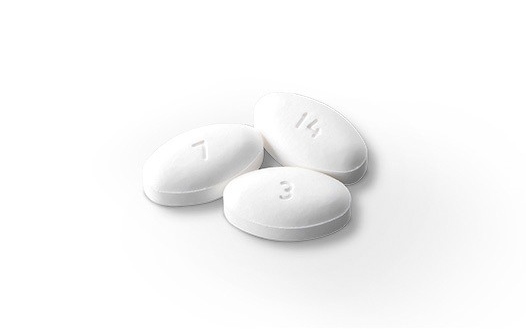
Rybelsus contains semaglutide, a component known for its effectiveness in weight loss and classified as a GLP-1 receptor agonist.
While most GLP-1 receptor agonists are administered via injection to deliver GLP-1, Rybelsus is notable for its oral administration capability.
It not only stimulates insulin secretion to lower blood glucose levels but also regulates gastrointestinal movement, thereby suppressing appetite. Due to its ability to lower blood glucose levels, it is used as a treatment for type 2 diabetes.
Rybelsus tablets obtained manufacturing and marketing approval domestically on June 29, 2020, and were listed under the drug price standard on November 18 of the same year.
Source: Ministry of Health, Labour and Welfare “Regarding Newly Approved Drugs”
Attachment for Rybersus
Rybelsus Tablets 3mg

© 2020 Novo Nordisk Pharma Ltd. All Rights Reserved. Source: Novo Nordisk Pharma Ltd. "Product Information Rybelsus®"
| Active Ingredient | Semaglutide (genetically modified) 3mg per tablet |
| Additives | Sodium salcaprozate, Povidone, Microcrystalline cellulose, Magnesium stearate |
Rybelsus Tablets 7mg

© 2020 Novo Nordisk Pharma Ltd. All Rights Reserved. Source: Novo Nordisk Pharma Ltd. "Product Information Rybelsus®"
| Active Ingredient | Semaglutide (genetically modified) 7mg per tablet |
| Additives | Sodium salcaprozate, Povidone, Microcrystalline cellulose, Magnesium stearate |
Rybelsus Tablets 14mg
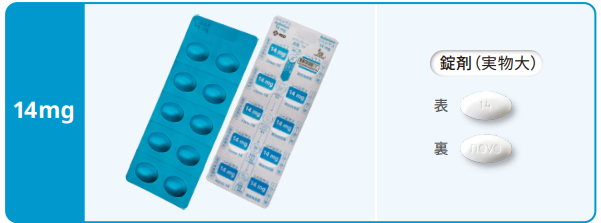
© 2020 Novo Nordisk Pharma Ltd. All Rights Reserved. Source: Novo Nordisk Pharma Ltd. "Product Information Rybelsus®"
| Active Ingredient | Semaglutide (genetically modified) 14mg per tablet |
| Additives | Sodium salcaprozate, Povidone, Microcrystalline cellulose, Magnesium stearate |
The reason why Rybelsus is trending
On the other hand, Rybelsus, which can be taken orally, saw explosive popularity after it filed for approval in Japan in July 2019 and received manufacturing and marketing approval in June 2020.
GLP-1 receptor agonists are recognized as relatively safe drugs because they are less likely to cause hypoglycemia when taken alone.

Differences between Rybelsus and Saxenda
Additionally, there is a difference in the effectiveness of the two drugs, with Rybelsus being regarded as a medication that is "expected to have a higher weight loss effect."
How Rybelsus (GLP-1) Works
The GLP-1 in Rybelsus promotes insulin secretion, which helps control blood glucose levels and suppresses appetite. Therefore, what is commonly referred to as the “GLP-1 diet” involves using medications that utilize the hormone GLP-1 for weight loss.
GLP-1 not only promotes insulin secretion to control blood glucose levels and suppress appetite, but it also controls gastrointestinal function. By slowing down the movement of the digestive tract, the digestion speed of food decreases, allowing you to feel full with a smaller amount of food.
Additionally, it slows down the absorption of food, which in turn slows down the absorption of sugars. This prevents a rapid rise in blood glucose levels after eating and helps reduce postprandial hyperglycemia. These mechanisms help suppress appetite.
Rybelsus is a type of medication known as a GLP-1 receptor agonist. GLP-1 receptor agonists are drugs that mimic the action of the hormone GLP-1.
The GLP-1 hormone present in the body is secreted from the small intestine when blood glucose levels rise after eating, promoting insulin secretion from the pancreas. When the amount of insulin increases due to the action of GLP-1, the amount of sugar in the blood decreases, which lowers blood glucose levels and makes it easier for cells such as muscle cells to use sugar as an energy source.
By utilizing this mechanism, it becomes easier to consume sugar. Moreover, Rybelsus is thought to help aim for a body constitution that burns calories more easily.
Features of Rybelsus (GLP-1)
-
POINT
1Taking medication without using a syringeGLP-1 receptor agonists are mostly administered via injection to deliver GLP-1, but Rybelsus can be taken orally.

-
POINT
2Appropriate dosage adjustment is possibleRybelsus is available in 3mg, 7mg, and 14mg doses. We will consult with you to adjust the dosage as needed while you are taking the medication.
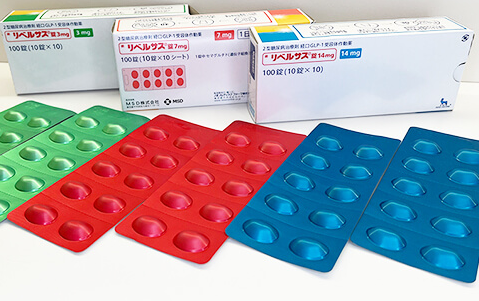
Reasons Why MY Beauty Clinic is Chosen


1
Consultation with highly specialized doctors
2
Enhance effectiveness by combining with other treatments
Improvement Effects of
Liberthas (GLP-1)
Liberthas (GLP-1)
-
01suppress appetite
It controls the function of the gastrointestinal tract, making it easier to feel full with less food than usual.
It also acts on the satiety center to reduce hunger and suppress appetite.
Furthermore, it slows down the rate at which food is absorbed, gradually decreasing the absorption of sugars.
This prevents a rapid rise in blood sugar levels after meals and helps reduce postprandial hyperglycemia.

-
02It becomes easier to metabolize sugars.
The GLP-1 hormone, which naturally exists in our bodies, is secreted from the small intestine when we eat and blood sugar levels rise, prompting the pancreas to release insulin.
Through the action of GLP-1, which increases the amount of insulin, the level of sugar in the blood decreases, leading to a reduction in blood sugar levels.
Utilizing the principle that cells in muscles and elsewhere can more easily consume sugar as an energy source, Liberthas targets GLP-1.

-
03It turns the body into one that easily burns calories.
If you feel like you are eating the same amount as when you were younger but have become more prone to gaining weight and find it harder to lose weight, it may be due to changes in the function of fat cells due to aging.
Fat cells include “white fat cells” that store visceral and subcutaneous fat, and “brown fat cells” that burn fat. The active functioning of brown cells makes the body more capable of burning calories. However, the activity of brown fat cells declines with aging and obesity.
This means that as you age, the number of brown fat cells decreases and the amount of visceral fat increases due to obesity, leading to a reduced capacity of brown fat cells that should ideally be burning fat.
As you age, even if you eat the same amount as when you were younger, the reduction in number and activity of brown fat cells makes it harder for your body to burn calories.
Liberthas targets the functioning of these brown fat cells, making it easier to achieve a body that can readily burn calories.
Moreover, Liberthas is considered a medication with a higher weight loss effect compared to Saxenda.


Case Photos of Rybelsus (GLP-1)
-
BEFORE
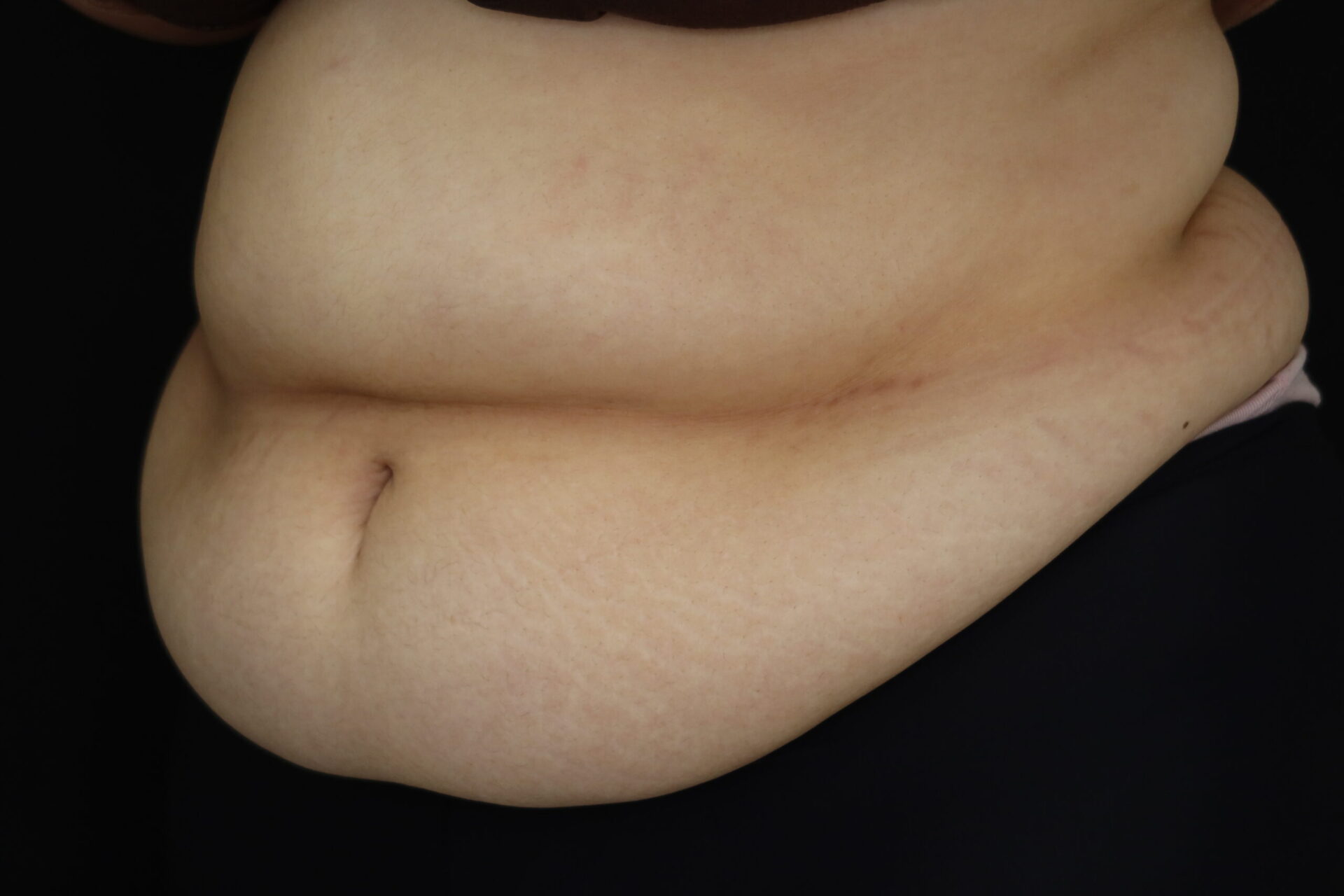 ▶
AFTER
▶
AFTER
 Symptoms
Patients who have been taking Rybelsus for 6 months. Combined treatment with CoolSculpting Elite and fat-burning IV drip.
Total Cost
¥445,600–634,000 (tax included)
Side Effects
Weight: -15.1 kg
Symptoms
Patients who have been taking Rybelsus for 6 months. Combined treatment with CoolSculpting Elite and fat-burning IV drip.
Total Cost
¥445,600–634,000 (tax included)
Side Effects
Weight: -15.1 kg
-
BEFORE
 ▶AFTER
▶AFTER SymptomsPatients who have been taking Rybelsus for 6 months. Combined treatment with CoolSculpting Elite and fat-burning IV drip.Total Cost¥445,600–634,000 (tax included)Side EffectsWeight: -15.1 kg
SymptomsPatients who have been taking Rybelsus for 6 months. Combined treatment with CoolSculpting Elite and fat-burning IV drip.Total Cost¥445,600–634,000 (tax included)Side EffectsWeight: -15.1 kg
How to take Rybelsus (GLP-1)
The GLP-1 hormone in the body is quickly broken down, resulting in a short duration of effect. However, Rybelsus has been modified to work longer with a once-daily dose, providing extended effects.
It is recommended to take Rybelsus on an empty stomach, such as upon waking up, with half a glass of water. To avoid poor absorption due to food or drink contents in the stomach, it is advisable to refrain from eating or drinking for 30 minutes after taking Rybelsus. Additionally, if you plan to take other medications, wait at least 30 minutes after taking Rybelsus before doing so. Since tea and coffee can also affect its absorption, it is important to take Rybelsus with water only.
Side Effect Risks
Please declare if you fall under the following categories as you cannot receive treatment.
- Pregnant or breastfeeding individuals
- Individuals planning to become pregnant
- Individuals with a history of pancreatitis
- Individuals currently taking other diabetes medications (oral or injectable)
Notes
At our clinic, a doctor prescribes Rybelsus after confirming the results of a blood test. If you have any ongoing medical conditions or are taking other medications, please inform the doctor during the consultation.
Regarding the contraindications for the combined use of Rybelsus:
Additionally, when used in combination with the thyroid medication levothyroxine (Thyradin®), there is a potential for the effects of levothyroxine to be enhanced. If you are taking both of these medications, please consult with a specialist.
Side Effects of Rybelsus
■ Hypoglycemia
■ Dizziness
■ Gastrointestinal issues (constipation, nausea, diarrhea, etc.)
■ Indigestion
At MY Beauty Clinic, a doctor will always conduct a medical consultation before prescribing Rybelsus, thereby reducing the risk of side effects. Gastrointestinal issues may lessen with continued use.
To minimize the occurrence of side effects, it is recommended to start with a lower dose and gradually increase it under the guidance of a doctor.
【How to Take】The Correct Way to Take Rybelsus
Take one prescribed Rybelsus tablet with approximately half a glass of water (about 120 mL or less). Eating or drinking immediately after taking Rybelsus can prevent the active ingredient from being absorbed properly, thereby reducing its effectiveness.
Therefore, it is recommended to wait at least 30 minutes after taking Rybelsus before eating or drinking anything.
Copyright © 2024 Merck & Co., Inc., Rahway, NJ, USA and its affiliates. All rights reserved. Source: MSD's Key Products Rybelsus® TOP
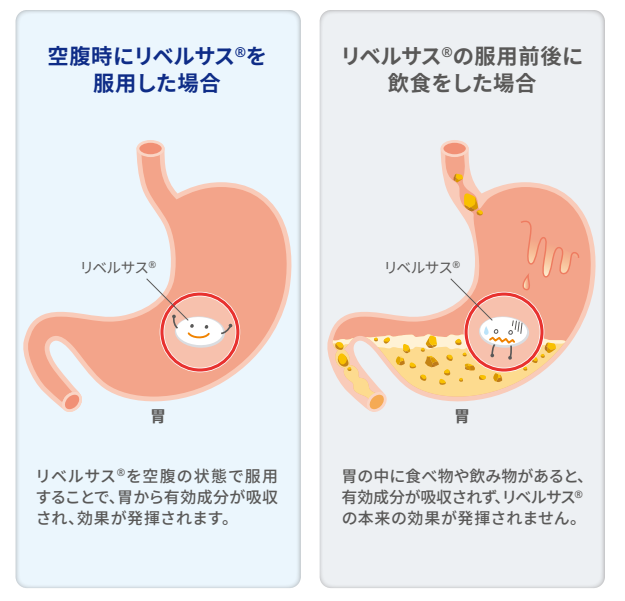
Points to Note When Taking Rybelsus
When taking Rybelsus, it is important to use approximately 120 ml of water and avoid taking it with tea, coffee, or medication jellies.
The Risks of Importing the Cheapest Rybelsus Individually
Source: Ministry of Health, Labour and Welfare "For those who are considering purchasing pharmaceuticals from overseas"
What to Do If Rybelsus Is Not Effective or You Are Not Losing Weight
Increase the dosage
For those who do not see any effects from taking Rybelsus, the doctor may assess your symptoms and condition during a consultation and can increase the dose up to a maximum of 14 mg.
If you are taking 3 mg or 7 mg of Rybelsus and do not notice any effects, please consult a specialist doctor to consider adjusting your dosage.
Do not stop taking Rybelsus on your own without consulting a doctor.
If you stop taking Rybelsus on your own, your body may not be accustomed to the eating habits regulated by the medication, making it easier to revert to previous eating habits and increasing the risk of rebound weight gain.
The timing of when you start to see effects from Rybelsus varies from person to person, so it is not possible to definitively say when you will notice results. If you do not feel the effects of Rybelsus or have any doubts or concerns about continuing the medication, please consult your doctor.
Follow the correct method of intake
Incorrect intake methods can lower the absorption rate of the medication, making it harder to experience the expected effects. Please review the guidelines on "How to Take Rybelsus Correctly" and ensure you follow the correct method of intake.
Review Your Lifestyle Habits
By reviewing and improving your lifestyle habits, you can more efficiently achieve your target weight and attain your desired body shape.
Treatment Process
-
1ReservationPlease make a reservation by phone, through the reservation form on our official website, or via LINE.

-
1ReservationPlease make a reservation by phone, through the reservation form on our official website, or via LINE.

-
2Counseling and ConsultationWe will carefully conduct counseling to understand your concerns and wishes, followed by a thorough consultation with a specialist doctor to propose the most suitable treatment. If you have any questions, please feel free to ask.

-
2Counseling and ConsultationWe will carefully conduct counseling to understand your concerns and wishes, followed by a thorough consultation with a specialist doctor to propose the most suitable treatment. If you have any questions, please feel free to ask.

-
3Blood TestAt our clinic, we ensure safety by always conducting a blood test. Blood test fee: ¥5,500 (tax included)

-
3Blood TestAt our clinic, we ensure safety by always conducting a blood test. Blood test fee: ¥5,500 (tax included)

-
4Prescription of MedicationMedication intake will begin according to your symptoms.

-
4Prescription of MedicationMedication intake will begin according to your symptoms.

Price Guide
For online consultations, the consultation fee is free, but there is a system usage fee of 330 yen (including tax) for the online consultation tool "curon," as well as a delivery fee of 550 yen (including tax) to your home.
Additionally, for safe treatment at our clinic, we require "blood test data" from the past year (data from regular health check-ups is sufficient).
If you do not have recent blood test data, you can undergo a blood test at our clinic for 5,500 yen (including tax) after your visit.
Frequently Asked Questions
Q
How many days' worth of LibelSAS can you purchase?
Q
Does weight drop immediately after taking it?
Q
Is it covered by insurance?
Q
When does weight loss start after taking LibelSAS?
Maintaining a regular lifestyle with moderate exercise and balanced nutrition alongside taking LibelSAS can help individuals experience its effects more effectively.
Q
Currently pregnant (planning to become pregnant, or breastfeeding), can LibelSAS be used?
Q
Can LibelSAS be purchased through online shopping?
To obtain LibelSAS, one option is to use a proxy service to import it directly from overseas through personal importation. However, there is a risk of receiving counterfeit products when importing LibelSAS from abroad, making this a risky method.
It is recommended to obtain LibelSAS through a medical institution where you can receive a prescription tailored to your specific health needs. This ensures that you are using the medication as directed by a healthcare professional.
Detailed Information
| Precautions | The following individuals are not eligible to take medication: Pregnant women, breastfeeding mothers, those planning to become pregnant Individuals with a history of pancreatitis Those currently taking other diabetes treatment medications orally or by injection |
|---|---|
| Risk of side effects | Please remove the tablet from the aluminum foil just before taking Liberasus. Due to its sensitivity to moisture and light, storing the tablets exposed may prevent the medication from working effectively. To ensure the medication works properly, avoid splitting or crushing the tablets before taking them. Doing so may not only reduce the effectiveness of the medication but could also increase the risk of side effects. |
Inquiries & Reservations
Please feel free to contact us.






